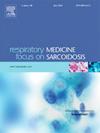Assessing the impact of electronic nicotine delivery systems on chronic obstructive pulmonary disease: A systematic review and meta-analysis
IF 3.5
3区 医学
Q2 CARDIAC & CARDIOVASCULAR SYSTEMS
引用次数: 0
Abstract
Background
Electronic Nicotine Delivery Systems (ENDS), commonly known as e-cigarettes or vapes, have gained widespread popularity, particularly among young adults and former smokers. While marketed as a harm reduction tool, concerns have emerged regarding their long-term impact on respiratory health, particularly their association with chronic obstructive pulmonary disease (COPD). This systematic review and meta-analysis aimed to evaluate the relationship between ENDS use and COPD risk while considering tobacco smoking as a key confounder.
Methods
A comprehensive search was conducted across PubMed, Embase, and Web of Science for studies published up to September 20, 2024. Observational studies assessing the association between ENDS use and COPD risk were included. A random-effects meta-analysis was performed using R statistical software (version 4.4). Tobacco smoking, a key confounder in COPD research, was accounted for in many included studies, with adjustments varying across studies.
Results
Fifteen studies met the inclusion criteria. The pooled odds ratio (OR) for current ENDS use and COPD risk was 1.488 (95 % CI: 1.363–1.623). Former ENDS users had an OR of 1.839 (95 % CI: 1.513–2.234), and ever-users had an OR of 1.787 (95 % CI: 1.421–2.247). Sensitivity analyses confirmed the robustness of findings, and no publication bias was detected.
Conclusion
This meta-analysis provides evidence of a significant association between ENDS use and increased COPD risk, even after adjusting for tobacco smoking. Future research should standardize smoking adjustments and investigate the independent impact of ENDS use on COPD.
求助全文
约1分钟内获得全文
求助全文
来源期刊

Respiratory medicine
医学-呼吸系统
CiteScore
7.50
自引率
0.00%
发文量
199
审稿时长
38 days
期刊介绍:
Respiratory Medicine is an internationally-renowned journal devoted to the rapid publication of clinically-relevant respiratory medicine research. It combines cutting-edge original research with state-of-the-art reviews dealing with all aspects of respiratory diseases and therapeutic interventions. Topics include adult and paediatric medicine, epidemiology, immunology and cell biology, physiology, occupational disorders, and the role of allergens and pollutants.
Respiratory Medicine is increasingly the journal of choice for publication of phased trial work, commenting on effectiveness, dosage and methods of action.
 求助内容:
求助内容: 应助结果提醒方式:
应助结果提醒方式:


